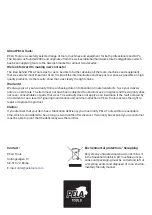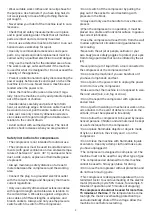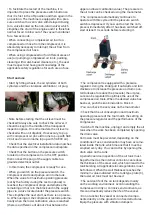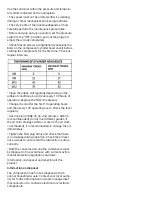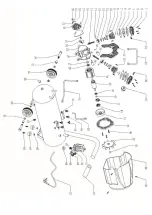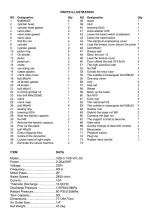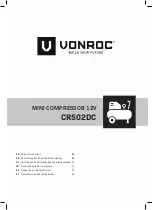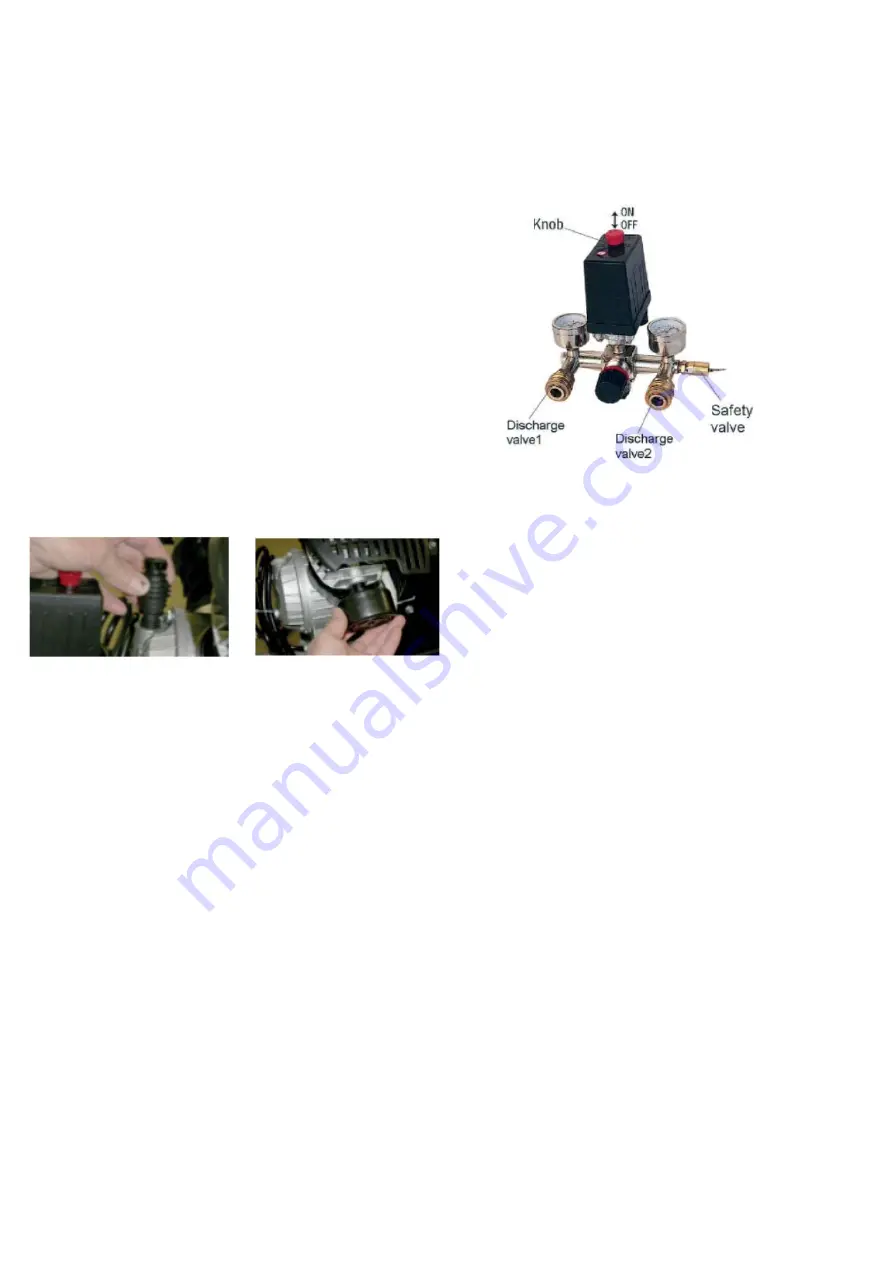
• To facilitate the restart of the machine, it is
important to press the pressure switch button so
that it is first in the off position and then again in the
on position. The machine is equipped with a pres-
sure switch with a vent valve with delayed closing
(or a valve located on the non-return valve) which
simplifies the start of the engine and it is therefore
normal for air to blow out of the vacuum container
for a few seconds.
• When connecting a compressed air tool to a
compressed air hose from the compressor, it is
absolutely necessary to interrupt the air flow from
the compressed air hose.
• When using compressed air for different areas of
use (air pumping, compressed air tools, painting,
cleaning with water-based cleaners, etc.), the user
must respect and have good knowledge of the
applicable safety regulations for each area of use.
Start and use
• Start by fitting wheels, the air cylinders of both
cylinders and the crankcase ventilation / oil plug.
• Note before starting that the oil level must be
checked! Always be sure to check the oil level, it
should be kept in the middle of the transparent
inspection glass. On some models, the oil level is
checked with an oil dipstick. If necessary, top up
with compressor oil (in cold rooms top up with SAE
20 oil and in warm rooms top up with SAE 30 oil).
• Check that the electrical installation data matches
the data specified on the compressor nameplate.
• Check that the button on the pressure switch
located on the compressor is in the OFF position,
then connect the plug of the supply cable to a
grounded electrical outlet.
• In this mode, the compressor is ready for use.
• When you switch on the pressure switch, the
compressor starts and pumps air into the tank.
When the value for maximum operating pressure
(set by the factory during the test run phase) is
reached, the compressor stops and empties the
remaining air that is in the block and in the supply
pipe via a valve located under the pressure switch.
This simplifies the next start, as there is no pressu-
re. When using air, the compressor restarts automa-
tically when the lower calibration value is reached
(there is a difference of about 2 bar between the
upper and lower calibration value). The pressure in
the air tank can be checked using the manometer.
• The compressor automatically continues to
operate with this cycle until the pressure switch
switch is depressed. If you want to start the com-
pressor immediately after it has been switched off,
wait at least 10 seconds before restarting it.
• The compressor is equipped with a pressure
regulator. Using the knob (pull it outwards and turn
clockwise to increase the pressure and turn coun-
terclockwise to reduce the pressure) the air pres-
sure can be regulated to optimize the use of the
compressed air tools. When the desired value has
been set, push the knob inwards to block it.
• You can check the set value on the manometer.
• Check that the air consumption and maximum
operating pressure of the tool match the setting on
the pressure regulator and the performance of the
compressor.
• Switch off the machine, unplug it and empty the air
tank when the work has been completed by opening
the drain valve.
Corrosion must be prevented, depending on the
conditions of use, condensation may have accumu-
lated inside the tank, which means that it must be
emptied every day. You can do this by opening the
drain valve on the tank.
A periodic service inspection of the air tank must
be performed as the internal corrosion can reduce
the thickness of the steel wall, which can lead to the
tank bursting. All applicable local regulations must
be followed. When the wall thickness reaches the
minimum value indicated on the tank type plate (C),
the lower air tank must not be used.
• The service life of the air tank depends mainly
on the working environment. Avoid installing the
compressor in dirty or corrosive environments, as
this can drastically reduce the life of the vessel.
• Do not anchor the vessel or connected compo-
nents directly on the ground or on fixed structures.
Equip the pressure with vibration dampers.


